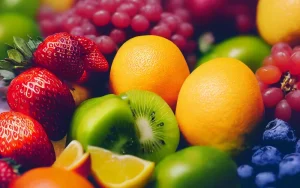Mouthfeel is crucial in determining a consumer’s overall experience because it transcends taste and appearance. Therefore, we will explore how it influences the perception of the quality of food products and consumer’s purchasing decisions. Also, we will explore how companies producing tropical fruit purees, simple juices, and concentrates can optimize the sensory experience.
We will also analyze the use of food technology for this purpose. Finally, the importance of recognizing organoleptic properties to design products with the ideal textures according to the expectations of the target market.
The importance of mouthfeel
A determining factor for the success of a food product is to create a positive sensory experience from the first bite. Success lies in conveying freshness, naturalness, and superior quality. This is accomplished by paying meticulous attention to appearance, aroma, taste, and most importantly, optimizing mouthfeel.
Consumers are looking for natural, fresh, and non GMO foods. But when they buy perishable food, they expect organoleptic properties, such as texture to remain intact. That is why producers invest in maintaining quality throughout the production chain, packaging, transport, storage and final preparation.
Mouthfeel: how does this aspect influence product choice?
According to studies, the texture of food has a greater impact on the perception of freshness and naturalness than its aroma. This is especially true for food grading in categories as diverse as fruits, vegetables, meats, dairy, and cereals.
For example, consumers expect a crunchy texture in apples, a creamy smoothness in yogurt, and a smooth, easy-to-swallow consistency in baby purees. When these expectations are not met, dissatisfaction is greater and influences consumers not to buy the product again.
Optimizing the organoleptic properties of juices and purees
Companies that produce juices, purees, and concentrates from tropical fruits such as mango, strawberry, passion fruit or guava face the challenge of preserving freshness and delivering the sensationexpected by consumers.
This requires controlling variables such as acidity, fiber content, size and shape of suspended particles. It is also important to validate how the organoleptic component of the food is impacted by other factors. For example: temperature, degree of concentration, sharpness, consistency, particle sensation and adhesiveness of the product.
Similarly, Likewise, in purees, it is essential to verify consistency, granulometry, and particle sensation with market standards. This is achieved by combining a good selection of raw materials and the use of technologies. For example: pulpers, refiners, and industrial homogenizers.
Also, sophisticated producers invest in washing food solutions to remove any unwanted residues before processing. This guarantees tropical fruit purees with the highest organoleptic quality.
In conclusion, mouthfeel is an important differentiator that food companies cannot neglect. Optimizing sensory properties such as textures and consistencies specific to each product and market is essential to exceed consumer expectations and generate repeat purchases. We hope this article highlights the importance of designing the best sensory experience and serves to move in this direction.
Bibliographic References
- Mio, K., Misaki, N., Risa, A., Kaoru, K. y Yuko, K. (2024). Effect of texture preference on food texture perception: Exploring the role of matching food texture and preference. Appetite, 192(1), 107078.
- Sampurna, R., Phu, W., Pankaj, K., Sabri, B., Nilesh, P., Ravi, P., Mahmud, A. y Naresh, K. (2023). Food product quality, environmental and personal characteristics affecting consumer perception toward food. Frontiers, vol 7.







